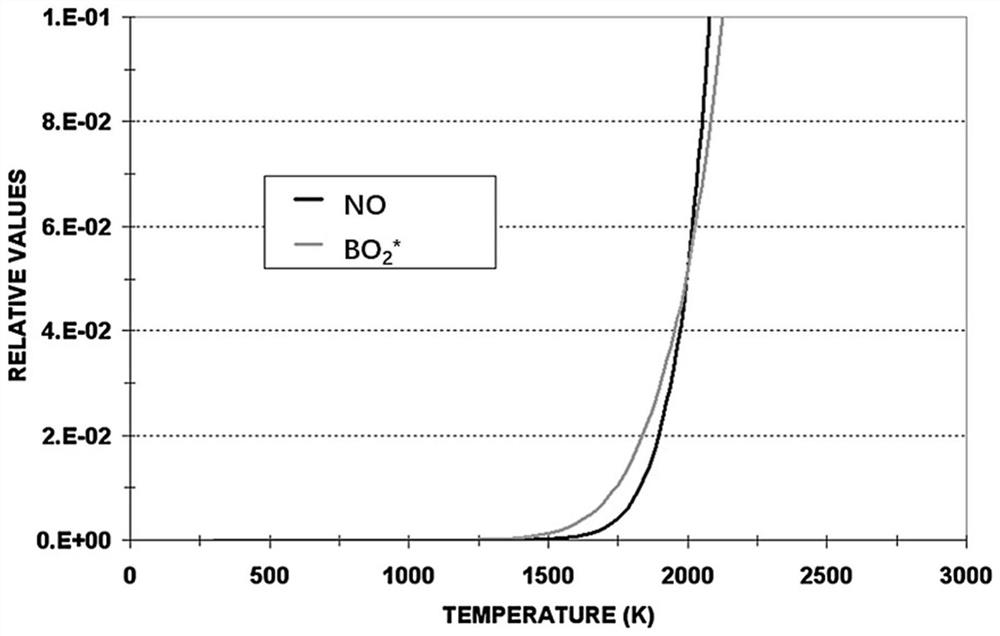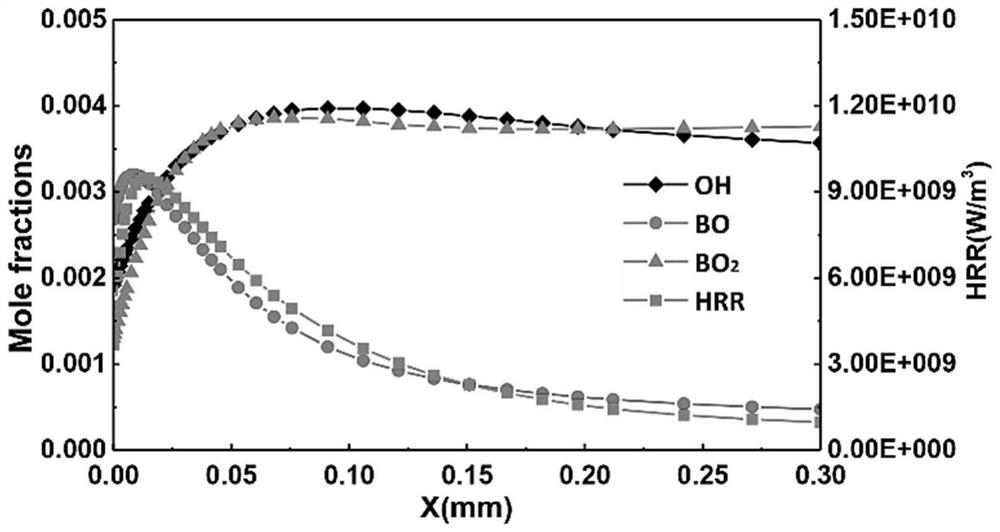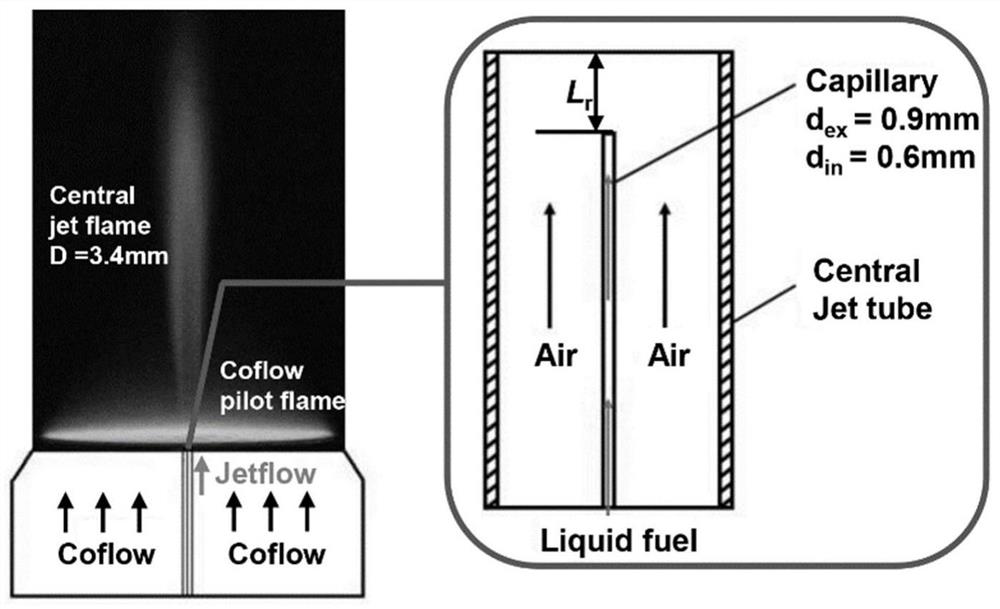A method for characterizing thermodynamic no x Imaging monitoring method and device for generating path
A thermal and imaging technology, used in measurement devices, chemiluminescence/bioluminescence, chemical analysis using combustion, etc., can solve the problems of inability to obtain and accurately predict the generation site, and achieve real-time monitoring of NOx emissions. Easy to operate effect
- Summary
- Abstract
- Description
- Claims
- Application Information
AI Technical Summary
Problems solved by technology
Method used
Image
Examples
Embodiment 1
[0056] In this example, considering thermal NO x The formation of BO comes from the local incorporation of high temperature and high concentration of atomic oxygen (a component that is difficult to measure in real time), while BO as an intermediate product of the combustion of boron particles or boron salts 2 * The chemiluminescent intensity of the chemiluminescence is proportional to the local concentration of atomic oxygen, and its signal intensity is strongly dependent on the local temperature, its formation is very similar to the thermal NO x generation mechanism.
[0057] In flame, thermal NO x The formation rate of is:
[0058] d[NO] / dt∝[N 2 ][O]exp(-38370 / T)
[0059] And BO 2 * The expression of the chemiluminescent intensity of is:
[0060] P chem ∝[BO][O]exp(-25000 / T)
[0061] In the above formula, the square brackets represent the concentration.
[0062] It can be seen that the thermal NO x The formation rate and BO 2 * Both quantities of chemiluminesce...
Embodiment 2
[0070] This example uses thermodynamic and kinetic calculations to verify that BO 2 * As a tracer of combusted nitrogen oxides and dynamic in situ characterization of thermal NO x Generate feasibility.
[0071] This example is based on the B / H / O / C combustion system model. The reaction process consists of 21 components and 103 basic reactions. The boron-containing substances used in the model include B, BO, BO 2 , HBO, B 2 o 2 , B 2 o 3 and HBO 2 , while H / O / C substances include H 2 , H, O 2 , O, OH, H 2 O, H 2 o 2 、HO 2 , CO, CO 2 and HCOs.
[0072] Set the initial temperature of the simulated reaction to 1800K, the initial pressure to 1atm, and the N 2 as a buffer gas. The mole fraction of the initial species is set as follows: X(HBO)=9×10 -3 , X(B 2 o 2 )=2.8×10 -3 , X(B 2 o 3 )=5×10 -4 , X (HBO 2 )=3×10 -4 , X(O 2 )=4.4×10 -2 , X(CO)=0.18, X(H 2 )=0.20, X(H)=1×10 -4 , X(H2 O)=1×10 -5 , X(N 2 ) = 0.56.
[0073] The calculations considered the ...
Embodiment 3
[0076] This embodiment is based on the detailed embodiment of liquid fuel to characterize thermal NO x The imaging monitoring method for generating the path is described.
[0077] Commercial amorphous boron nanoparticles of 400 nm particle size were purchased in this example to be blended into the base liquid fuel (ethanol in this example). The morphology and size distribution of boron nanoparticles were determined using a field emission scanning electron microscope (SEM, NOVA NanoSEM 230). X-ray diffraction (XRD, Mini Flex 600, Rigaku) was used to determine the crystalline nature of the original boron particles.
[0078] An ideal nanofluid fuel should be homogeneous, long-term stable, and low in particle aggregation. Therefore, uniform dispersion of particles in base fuels is crucial for the preparation of nanofuels. However, the actually purchased nano-boron particles have a non-spherical shape, and due to the mechanism of surface energy minimization, it is easy to caus...
PUM
| Property | Measurement | Unit |
|---|---|---|
| particle diameter | aaaaa | aaaaa |
| particle diameter | aaaaa | aaaaa |
| diameter | aaaaa | aaaaa |
Abstract
Description
Claims
Application Information
 Login to View More
Login to View More - Generate Ideas
- Intellectual Property
- Life Sciences
- Materials
- Tech Scout
- Unparalleled Data Quality
- Higher Quality Content
- 60% Fewer Hallucinations
Browse by: Latest US Patents, China's latest patents, Technical Efficacy Thesaurus, Application Domain, Technology Topic, Popular Technical Reports.
© 2025 PatSnap. All rights reserved.Legal|Privacy policy|Modern Slavery Act Transparency Statement|Sitemap|About US| Contact US: help@patsnap.com



